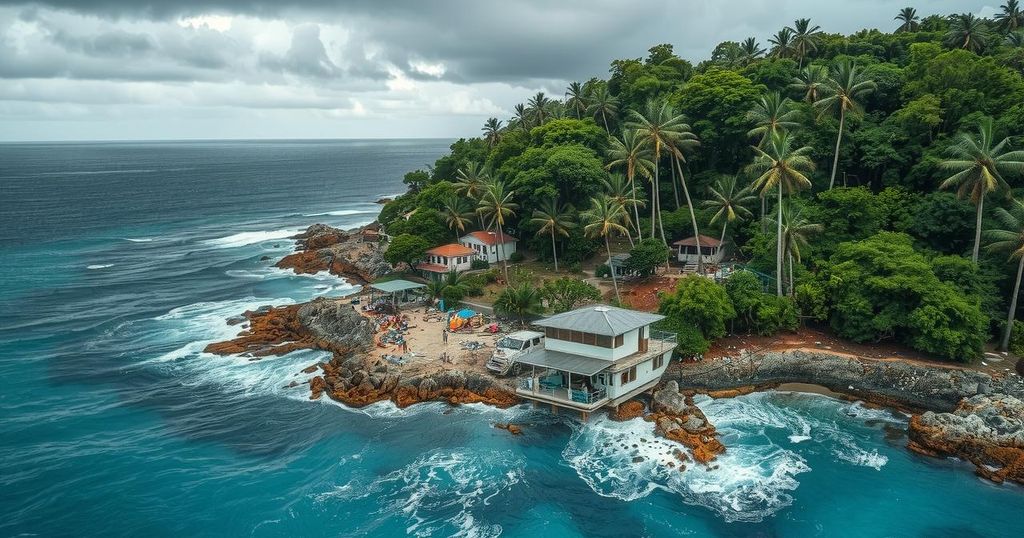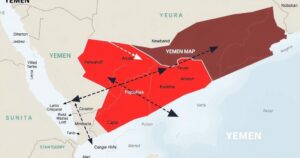Tropical Storm Dikeledi Strikes Mayotte Amid Recovery from Cyclone Chido

Mayotte has been struck by Tropical Storm Dikeledi shortly after recovering from Cyclone Chido, which caused widespread destruction and numerous casualties. The new storm has prompted officials to enforce safety measures, warning residents of potential flooding and landslide risks. Recovery efforts are ongoing, underscoring the challenges faced by the territory’s population amid repeated natural disasters during the cyclone season.
On January 12, Mayotte, a French territory in the Indian Ocean, was hit by Tropical Storm Dikeledi, shortly after suffering the devastating impacts of Cyclone Chido just weeks prior. This latest storm has forced residents to stay indoors and seek shelter due to heavy rainfall and winds affecting the region. The cyclone previously inflicted significant damage on the islands, resulting in 39 confirmed deaths and leaving over 200 individuals missing, along with 5,000 injured, emphasizing the dire state of recovery efforts still underway.
The French meteorological service, Meteo-France, reported that Dikeledi had weakened to a tropical storm after previously impacting Madagascar, yet posed a risk of strengthening again. Authorities have issued a red alert for the islands, warning of potential flooding and landslides, and emphasizing the need for residents to prioritize safety. Meanwhile, makeshift shelters have been opened across the territory, reiterating the gravity of the situation as the islands grapple with compounded challenges from recent natural disasters.
Situated off the eastern coast of Africa, Mayotte has a population of approximately 320,000, supplemented by an estimated 100,000 undocumented migrants from neighboring regions. The islands, which are part of the poorest department in France, had only begun to recover from Cyclone Chido, which has drawn public scrutiny regarding the French government’s response and perceived neglect. The mobilization of more than 4,000 emergency personnel underscores the urgency in addressing the consequences of Dikeledi, particularly in areas severely impacted by Chido, such as Mamoudzou.
The cyclone’s earlier devastation was exacerbated by challenges in recording deaths and injuries, especially among undocumented migrants who often observe rapid burial customs. National reports suggest a potential increase in the final toll, which may exceed initial estimates. Meteorologists project that Dikeledi could shift southwards towards Madagascar, as the cyclone season persists in the region, continuing a troubling trend of severe weather impacting the Indian Ocean territories.
Mayotte’s resilience is critical as it faces dual crises from two successive storms in a short period, prompting increased scrutiny on disaster preparedness and response mechanisms. The territory’s experience with Cyclone Chido, combined with the onslaught of Tropical Storm Dikeledi, serves as a poignant reminder of the challenges faced in the face of climate-related disasters during the active cyclone season.
The recent disaster events in Mayotte highlight the vulnerability of island territories to extreme weather phenomena, particularly during the cyclone season that spans from November to April. Located in the Indian Ocean, Mayotte is susceptible to cyclones, with Cyclone Chido being described as the worst storm to have struck the islands in nearly a century. The destruction caused by such storms significantly impacts the infrastructure, safety, and overall wellbeing of the local population, which includes many undocumented migrants drawn to the territory for better living conditions. The recovery efforts in the aftermath of such devastating weather events are often complicated by social and demographic factors, including official neglect and challenges in accurately documenting casualties.
In conclusion, the recent impact of Tropical Storm Dikeledi on Mayotte, following the catastrophic aftermath of Cyclone Chido, serves as a stark reminder of the ongoing dangers faced by the territory. With a careful mobilization of emergency resources and the establishment of safety measures, local authorities are attempting to mitigate the effects of the storm while underscoring the urgent need for comprehensive disaster recovery and preparedness strategies. The situation in Mayotte calls for increased attention from both national and international communities to address the vulnerabilities faced by its inhabitants in the wake of climate-related disasters.
Original Source: www.latestly.com








